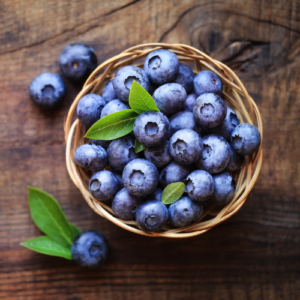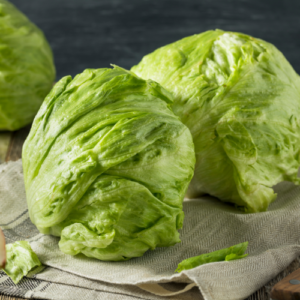Spring is in full swing!
It’s the season of renewal and a time to celebrate nature’s colorful bounty on our plates.
Whether you are a seasoned produce connoisseur or just diving into the world of fresh produce, knowing how to pick the cream of the crop can make all the difference in your culinary adventures.
In this guide, we’ll delve into the art of selecting the finest spring produce to help you level up your springtime cooking game. Grab your shopping bag and join us as we embark on a journey to pick the best of spring’s harvest.
STRAWBERRIES
Look for bright red color and firm texture. Avoid strawberries with white or green patches, which indicate they are not fully ripe.
RHUBARB
Select stalks that are firm and glossy with a deep color. Avoid rhubarb with soft spots or blemishes.
CHERRIES
Choose cherries that are plump, firm, and shiny. They should have a deep, vibrant color, depending on the variety. Avoid cherries with blemishes or soft spots.
APRICOTS
Look for apricots that are slightly soft to the touch and have a deep orange color. They should give slightly when gently pressed. Avoid apricots that are overly hard or green.
BLUEBERRIES
Choose blueberries that are plump, firm, and deep blue in color. They should have a slight white powdery coating called “bloom.” Avoid blueberries that are soft, mushy, or have mold.
MANGOES
Smell the stem end for a sweet, fruity aroma. Squeeze gently; ripe mangoes will yield slightly to pressure. Additionally, ripe mangoes often have some wrinkles on the skin.
PINEAPPLE
Sniff the base of the pineapple for a sweet, tropical fragrance. Press lightly on the skin; ripe pineapples will give slightly. The skin should also have a golden color and yield slightly to pressure.
KIWI
Hold the kiwi in your hand and gently press with your thumb. Ripe kiwis will yield slightly to pressure. Additionally, ripe kiwis should have a plump feel and yield to slight pressure when pressed.
PAPAYA
Look for papayas that have a yellow-orange skin and yield slightly to gentle pressure. The skin should be smooth and free of blemishes. A ripe papaya will have a sweet fragrance.
HONEYDEW MELON
Sniff the blossom end for a sweet aroma. Press lightly on the stem end; ripe honeydew melons will yield slightly. The skin should have a creamy yellow color and feel slightly waxy.
ASPARAGUS
Look for vibrant, firm, straight stalks with tightly closed tips. The ends should be moist and not dried out. The thickness or thinness of a spear is a matter of preference and not an indication of ripeness.
SPINACH
Choose leaves that are vibrant green and crisp, avoiding any yellowing or wilting.
ARUGULA
Look for bright green leaves that are crisp and not wilted.
LETTUCE
Select heads with crisp leaves and avoid any with browning edges or wilted leaves.
PEAS
For garden peas, look for pods that are bright green and firm. For sugar snap peas, choose plump pods that snap easily when bent.
RADISHES
Choose radishes that are firm with smooth skin. Avoid any that are soft or have mushy spots.
ARTICHOKE
Look for artichokes with tightly closed leaves and a firm stem. Squeeze them gently; they should feel heavy for their size.
BROCCOLI
Choose broccoli with firm, compact florets and crisp stems. Avoid broccoli with yellowing florets or dried-out stems.
CARROTS
Select carrots that are firm with a bright orange color. Avoid carrots with soft spots or wilting greens.
BEETS
Choose beets that are firm with smooth skin and vibrant color. Avoid any that are soft or have bruises.
CABBAGE
Look for heads of cabbage that are firm and heavy for their size. Avoid any with wilted or damaged outer leaves.
KALE
Select kale with crisp leaves and vibrant color. Avoid any that are wilted or yellowing.
FENNEL
Choose fennel bulbs that are firm with no signs of wilting or browning. The fronds should be green and feathery.
SWISS CHARD
Select Swiss chard with crisp, brightly colored leaves. Avoid any with yellowing or wilting leaves.
GREEN ONIONS
Look for green onions with crisp, bright green tops and firm white bulbs. Avoid any with slimy or wilted leaves.
TURNIPS
Choose turnips that are firm with smooth skin and vibrant color. Avoid any that are soft or have spots.
MUSTARD GREENS
Look for mustard greens with crisp leaves and vibrant color. Avoid any that are wilted or yellowing.
BRUSSEL SPROUTS
Select Brussels sprouts that are firm and compact with tight, green leaves. Avoid any with yellowing leaves or a strong odor
Now you know all you need to know about pick the best produce.
Above all remember that freshness is key. Whether you’re selecting vibrant strawberries, crisp asparagus, or tender spinach, trust your senses to guide you. Embrace the seasonal abundance, savor the flavors of spring, and enjoy the nourishment that nature provides. With these tips in mind, may your culinary adventures be filled with delicious dishes that celebrate the vibrant colors and flavors of the season. Happy picking and happy cooking!































